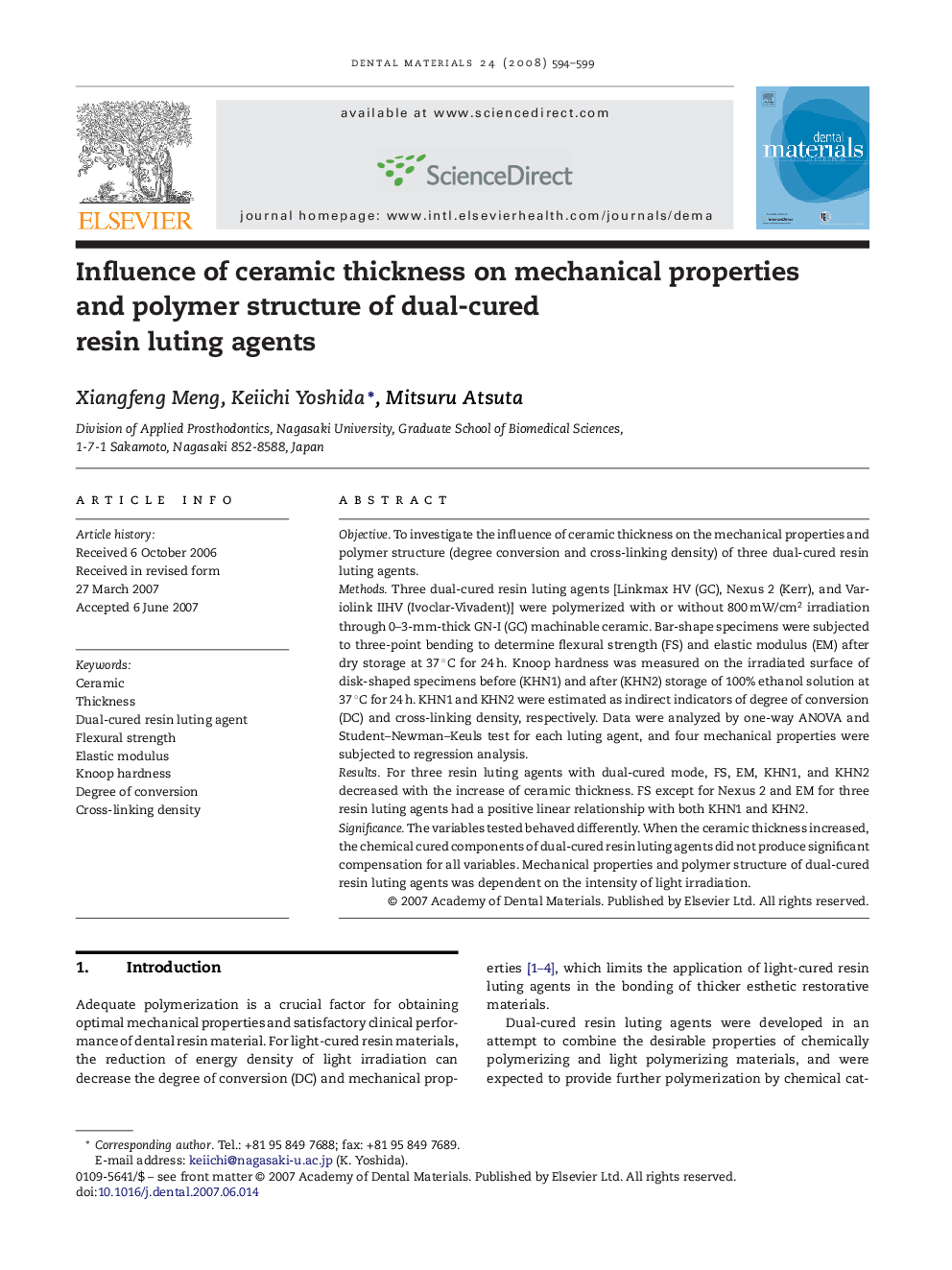| Article ID | Journal | Published Year | Pages | File Type |
|---|---|---|---|---|
| 1423206 | Dental Materials | 2008 | 6 Pages |
ObjectiveTo investigate the influence of ceramic thickness on the mechanical properties and polymer structure (degree conversion and cross-linking density) of three dual-cured resin luting agents.MethodsThree dual-cured resin luting agents [Linkmax HV (GC), Nexus 2 (Kerr), and Variolink IIHV (Ivoclar-Vivadent)] were polymerized with or without 800 mW/cm2 irradiation through 0–3-mm-thick GN-I (GC) machinable ceramic. Bar-shape specimens were subjected to three-point bending to determine flexural strength (FS) and elastic modulus (EM) after dry storage at 37 °C for 24 h. Knoop hardness was measured on the irradiated surface of disk-shaped specimens before (KHN1) and after (KHN2) storage of 100% ethanol solution at 37 °C for 24 h. KHN1 and KHN2 were estimated as indirect indicators of degree of conversion (DC) and cross-linking density, respectively. Data were analyzed by one-way ANOVA and Student–Newman–Keuls test for each luting agent, and four mechanical properties were subjected to regression analysis.ResultsFor three resin luting agents with dual-cured mode, FS, EM, KHN1, and KHN2 decreased with the increase of ceramic thickness. FS except for Nexus 2 and EM for three resin luting agents had a positive linear relationship with both KHN1 and KHN2.SignificanceThe variables tested behaved differently. When the ceramic thickness increased, the chemical cured components of dual-cured resin luting agents did not produce significant compensation for all variables. Mechanical properties and polymer structure of dual-cured resin luting agents was dependent on the intensity of light irradiation.
